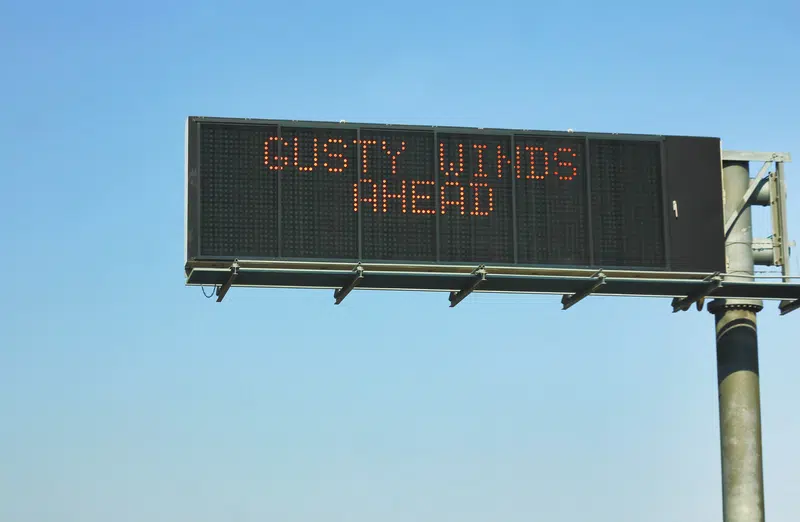Environment Canada has two warnings out today (Aug 16) about gusting winds and poor air quality due to wildfire smoke.
It says “strong northwesterly winds will develop in the wake of a low pressure system moving through southern Manitoba this morning. Gusts to 80 km/h or more will be possible for southeastern Saskatchewan and southwestern Manitoba beginning later this morning, expanding into the Red River Valley this afternoon. Wind warnings may be needed for portions of the statement area should forecast winds intensify further.
The winds will rapidly diminish this evening as the low departs into Ontario.
High winds may toss loose objects or cause tree branches to break. High winds may result in power outages and fallen tree branches. Be prepared to adjust your driving with changing road conditions due to high winds.”
The weather office also says “wildfire smoke from forest fires in the northern Prairies and Northwest Territories remains across much of the province.
Many regions in southern Manitoba will see varying amounts of smoke through Wednesday while the smoke remains generally widespread in the north. Poor conditions will become more widespread again on Wednesday night.
Improvement is expected in northern Manitoba beginning early Thursday, but areas in the south will likely have to wait until Thursday evening.
Wildfire smoke concentrations can fluctuate over short distances and vary considerably from hour to hour.
Wildfire smoke can be harmful to everyone’s health even at low concentrations. Everyone can take action to reduce their exposure to wildfire smoke.
People with lung disease (such as asthma) or heart disease, older adults, children, pregnant people, and people who work outdoors are at higher risk of experiencing health effects caused by wildfire smoke. Speak with your health care provider about developing a management plan for wildfire smoke events and maintaining a supply of necessary medications at home and always carrying these medications with you during wildfire season.
Stop or reduce your activity level if breathing becomes uncomfortable or you or someone in your care feel unwell. Contact your health care provider or local health authority if you develop severe symptoms or need advice.
Check the Air Quality Health Index (AQHI) and monitor your symptoms. People respond differently to smoke. Mild irritation and discomfort are common, and usually disappear when the smoke clears. Drinking lots of water can help your body cope with the smoke.
If you have an HVAC system in your home, use the highest rated MERV filter for your system (ideally rated 13 or higher) and set the fan to recirculate air constantly. You can also use a portable High Efficiency Particulate Air (HEPA) air cleaner. Keep your doors and windows closed if the temperature in your home is comfortable.
Take a break from the smoke at a location in your community where you can find clean, cool air.
If you must spend time outdoors, a well-fitted respirator type mask (such as a NIOSH certified N95 or equivalent respirator) that does not allow air to pass through small openings between the mask and face, can help reduce your exposure to the fine particles in smoke. These fine particles generally pose the greatest risk to health. However, respirators do not reduce exposure to the gases in wildfire smoke. It is important to listen to your body and reduce or stop activities if you are experiencing symptoms.
Be sure to check on people in your care and those around you who may be more susceptible to smoke.
Reduce sources of indoor air pollution. If you can, avoid smoking or vaping indoors, burning incense and candles, frying foods, using wood stoves and vacuuming. Dust on indoor surfaces can be removed by wiping and wet mopping during a pollution episode.”









